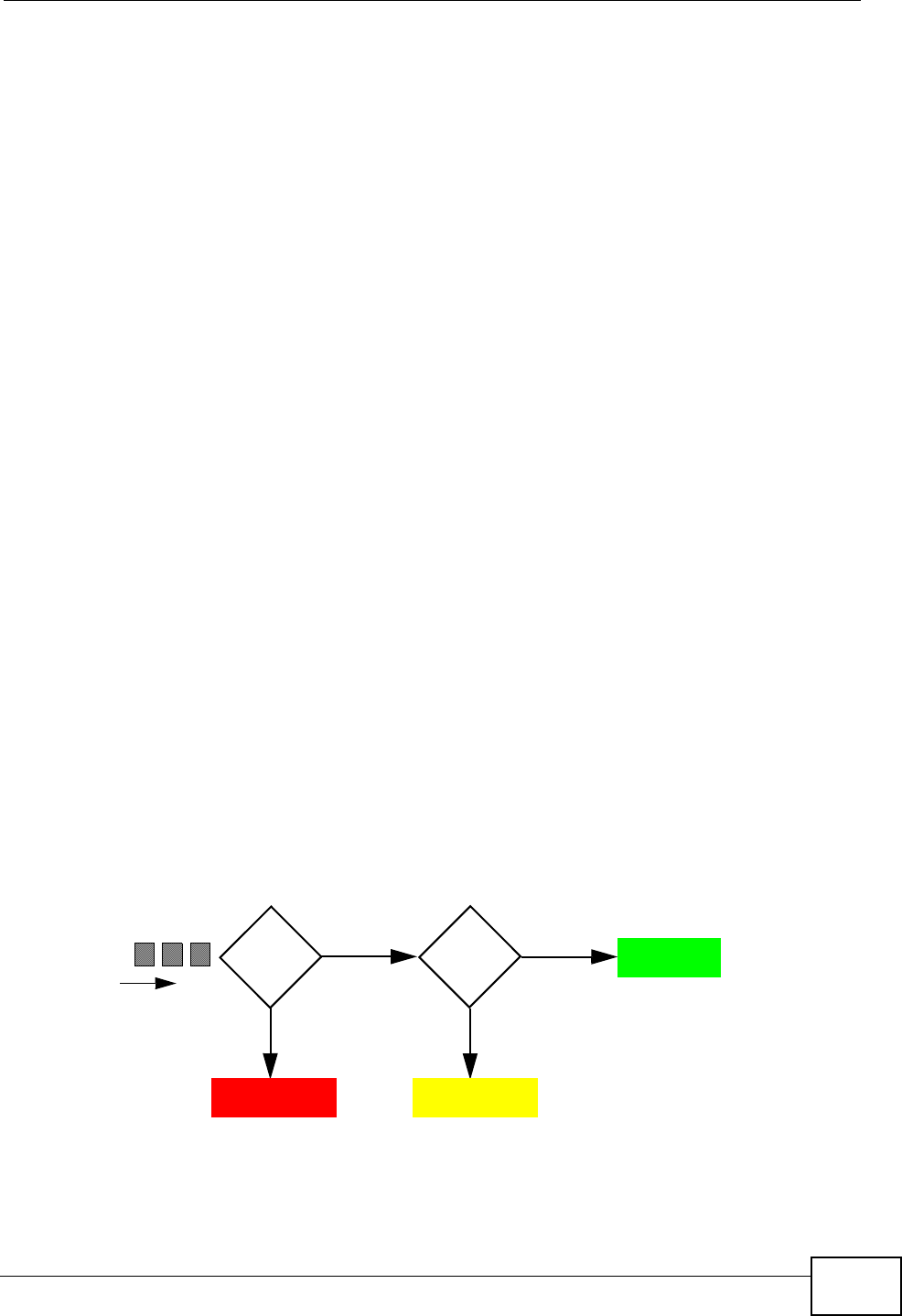
Chapter 36 Differentiated Services
MGS3700-12C User’s Guide
343
Two Rate Three Color Marker (TRTCM, defined in RFC 2698) is a type of traffic
policing that identifies packets by comparing them to two user-defined rates: the
Committed Information Rate (CIR) and the Peak Information Rate (PIR). The CIR
specifies the average rate at which packets are admitted to the network. The PIR
is greater than or equal to the CIR. CIR and PIR values are based on the
guaranteed and maximum bandwidth respectively as negotiated between a
service provider and client.
Two Rate Three Color Marker evaluates incoming packets and marks them with
one of three colors which refer to packet loss priority levels. High packet loss
priority level is referred to as red, medium is referred to as yellow and low is
referred to as green. After TRTCM is configured and DiffServ is enabled the
following actions are performed on the colored packets:
• Red (high loss priority level) packets are dropped.
• Yellow (medium loss priority level) packets are dropped if there is congestion on
the network.
• Green (low loss priority level) packets are forwarded.
TRTCM operates in one of two modes: color-blind or color-aware. In color-blind
mode, packets are marked based on evaluating against the PIR and CIR
regardless of if they have previously been marked or not. In the color-aware
mode, packets are marked based on both existing color and evaluation against the
PIR and CIR. If the packets do not match any of colors, then the packets proceed
unchanged.
36.2.1 TRTCM-Color-blind Mode
All packets are evaluated against the PIR. If a packet exceeds the PIR it is marked
red. Otherwise it is evaluated against the CIR. If it exceeds the CIR then it is
marked yellow. Finally, if it is below the CIR then it is marked green.
Figure 172 TRTCM-Color-blind Mode
Exceed
PIR?
High Packet
Loss
Exceed
CIR?
Medium Packet
Loss
NO
YES
NO
YES
Low Packet
Loss


















